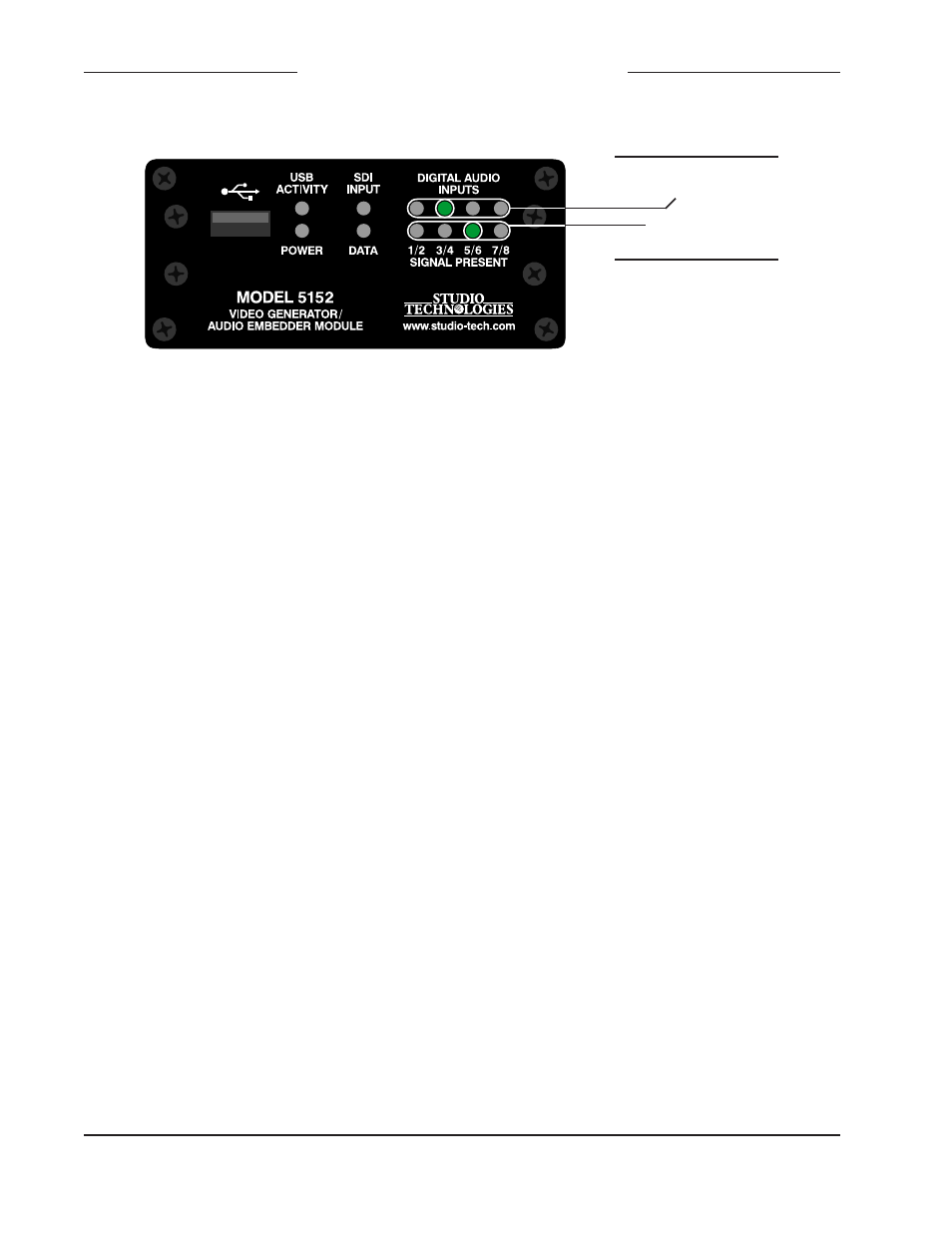Sfp module flexibility – Studio Technologies 5152 V.1 User Manual
Page 32

Issue 5, September 2013
Model 5152 User Guide
Page 32
Studio Technologies, Inc.
Model 5152
Video Generator/Audio Embedder Module
4. After a few seconds the USB Activity
LED will go out and the FPGA firmware
version will be displayed by the eight
Digital Audio Inputs Signal Present
LEDs. The top row of four LEDs will
display the major version number with
a range of 1-4. The bottom row of four
LEDs will display the minor version
number with a range of 0 (no LED lit)
to 4. Refer to Figure 10 for details.
5. After a final short pause the LEDs will
begin performing in their normal op-
erating manner. The Power LED will
remain lit. The USB Activity LED will
only be active when a USB flash drive
is inserted and file transfer activity is
taking place. The SDI Input LED will
light whenever a valid SDI signal is
connected to either the coaxial (BNC)
input or the optical input, depending on
the module’s capability and configura-
tion setting. The Data LED will light
whenever local data is received via the
RS-485 data bus from a Studio Tech-
nologies’ Model 5190 Remote Access
Module. If digital audio input signals
have been configured to be embedded
their associated Digital Audio Inputs
Signal Present LEDs will light whenever
signal levels are –40 dBFS or greater.
Once a user gets accustomed to what’s
actually happening during power up it
should be fairly straightforward to “read”
the version numbers.
SFP Module Flexibility
The Model 5152 was designed to allow an
MSA-compliant SFP optical module to be
installed at the factory. Optical modules are
available with a range of input and output
capabilities to meet the needs of various
applications. For maximum flexibility the
SFP mating connector and associated
“cage” on the Model 5152’s FPGA circuit
board were implemented to meet the elec-
trical and mechanical requirements of the
MSA SFP standard. The MSA SFP stan-
dard was originally developed for use with
optical data (Ethernet) modules. It has
also become popular for use with SFP
modules that support SMPTE-compliant
SDI signals.
It’s interesting to note that several compa-
nies offer non-optical SFP modules that
support the MSA SFP standard as well.
For example, Embrionix of Canada offers
a wide range of specialized SFP modules.
These include coaxial SDI input and output
modules that use DIN 1.0/2.3 and HD-BNC
connectors. In addition, they offer SFP
Figure 10. Detail of front panel showing the LEDs that display the MCU and FPGA
firmware versions. In this example, the version shown is 2.3.
Major Version Number
1 2 3 4
O O O
O O O
.1 .2 .3 .4
Minor Version Number
(
No LED lit indicates .0)
